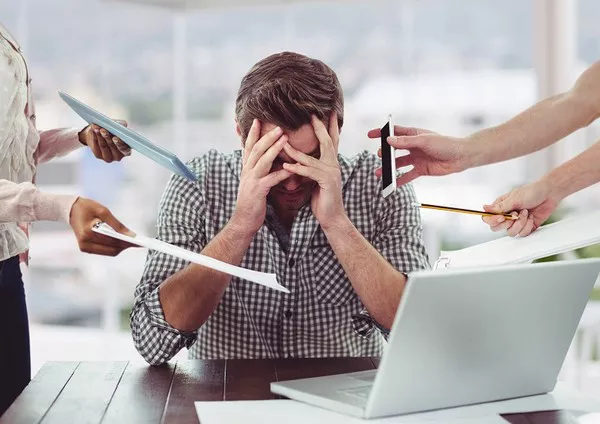Anxiety is a natural response to stress, but when it becomes overwhelming, it can manifest in various physical symptoms that can make individuals feel unwell or even sick. This experience, often referred to as “somatic anxiety,” can significantly impact a person’s quality of life. As a psychologist, I have encountered many individuals who struggle with the physical manifestations of anxiety, and this article aims to provide insights into understanding these symptoms and strategies to alleviate them.
Understanding the Link Between Anxiety and Physical Symptoms
Anxiety is not just a mental state; it is a physiological response that involves various systems in the body. When you experience anxiety, your body activates the “fight or flight” response, a survival mechanism that prepares you to face perceived threats. This response involves the release of stress hormones like adrenaline and cortisol, which trigger a range of physical reactions.
These reactions can include:
Increased heart rate: As your body prepares to respond to danger, your heart rate increases to pump more blood to your muscles.
Rapid breathing: Your breathing may become shallow and quick to increase oxygen intake, which is necessary for muscle activity.
Muscle tension: Your muscles may tense up, readying your body for physical action.
Digestive changes: Blood flow may be redirected away from your digestive system, leading to nausea, stomach pain, or other gastrointestinal issues.
Sweating: Your body may start to sweat to cool down and prevent overheating during physical exertion.
These physical symptoms are normal in the context of an immediate threat. However, when anxiety becomes chronic, these reactions can occur frequently and inappropriately, leading to persistent feelings of sickness.
Common Physical Symptoms of Anxiety
The physical symptoms of anxiety can vary widely from person to person, but some of the most common include:
- Nausea or upset stomach
- Headaches or migraines
- Dizziness or lightheadedness
- Shortness of breath
- Palpitations or a racing heart
- Muscle tension or aches
- Sweating or chills
- Fatigue or insomnia
- Tingling or numbness in extremities
These symptoms can be distressing and, in some cases, may exacerbate the anxiety itself, creating a vicious cycle. Understanding the mind-body connection in anxiety is crucial for breaking this cycle and alleviating physical discomfort.
The Psychological Impact of Feeling Sick from Anxiety
Feeling physically unwell due to anxiety can have a profound psychological impact. Individuals may begin to worry excessively about their health, fearing that their symptoms are indicative of a serious medical condition. This can lead to health anxiety or hypochondria, where the fear of illness becomes a source of additional anxiety.
Moreover, the experience of somatic symptoms can make individuals feel trapped in a cycle of anxiety. The fear of experiencing these symptoms can lead to avoidance behaviors, such as avoiding social situations, work, or other activities that might trigger anxiety. This avoidance can further reinforce the anxiety, leading to increased isolation and decreased quality of life.
How to Stop Feeling Sick from Anxiety: Effective Strategies
Managing the physical symptoms of anxiety requires a comprehensive approach that addresses both the mind and the body. Below are several strategies that can help alleviate somatic anxiety and reduce feelings of sickness.
1. Cognitive Behavioral Therapy (CBT)
Cognitive Behavioral Therapy (CBT) is one of the most effective therapeutic approaches for managing anxiety. CBT focuses on identifying and challenging negative thought patterns that contribute to anxiety and physical symptoms. By changing the way you think about your anxiety, you can reduce its impact on your body.
Cognitive restructuring: This involves identifying irrational or distorted thoughts, such as catastrophic thinking (“I’m going to pass out from anxiety”), and replacing them with more realistic and balanced thoughts (“This is just anxiety, and it will pass”).
Exposure therapy: Gradual exposure to anxiety-provoking situations can help desensitize you to the physical symptoms and reduce avoidance behaviors.
2. Mindfulness and Relaxation Techniques
Mindfulness practices can help you stay grounded in the present moment and reduce the impact of anxiety on your body. Techniques such as deep breathing, progressive muscle relaxation, and guided imagery can calm the nervous system and alleviate physical symptoms.
Deep breathing: Practice diaphragmatic breathing, where you inhale deeply through your nose, allowing your abdomen to rise, and exhale slowly through your mouth. This helps activate the parasympathetic nervous system, which counteracts the fight-or-flight response.
Progressive muscle relaxation: This technique involves tensing and then relaxing different muscle groups in the body, which can help reduce muscle tension and physical discomfort associated with anxiety.
Guided imagery: Visualizing a peaceful scene or place can help distract your mind from anxiety and promote relaxation.
3. Physical Activity
Regular physical activity is a powerful tool for managing anxiety. Exercise helps reduce stress hormones like cortisol and increases the production of endorphins, which are natural mood lifters.
Aerobic exercise: Activities like walking, jogging, swimming, or cycling can help reduce anxiety and its physical symptoms.
Yoga: Combining physical postures with breathing exercises and meditation, yoga can help reduce muscle tension, improve flexibility, and promote relaxation.
Stretching: Regular stretching can help relieve muscle tension and improve circulation, reducing physical discomfort.
4. Healthy Diet and Hydration
What you eat and drink can have a significant impact on your anxiety levels and physical well-being. Maintaining a balanced diet and staying hydrated can help reduce anxiety symptoms.
Avoid caffeine and alcohol: Both caffeine and alcohol can exacerbate anxiety symptoms, including nausea and palpitations. Reducing or eliminating these substances can help alleviate physical discomfort.
Eat balanced meals: Incorporate a variety of fruits, vegetables, lean proteins, and whole grains into your diet. Eating regular meals can help stabilize blood sugar levels, which can impact mood and anxiety.
Stay hydrated: Dehydration can worsen anxiety symptoms, so it’s important to drink plenty of water throughout the day.
5. Sleep Hygiene
Adequate sleep is essential for managing anxiety and its physical symptoms. Poor sleep can increase stress levels and make it more difficult to cope with anxiety.
Establish a routine: Go to bed and wake up at the same time each day, even on weekends. This helps regulate your body’s internal clock.
Create a relaxing environment: Make your bedroom a comfortable, quiet, and dark space. Avoid using electronic devices before bed, as the blue light can interfere with sleep.
Practice relaxation techniques before bed: Engage in calming activities, such as reading, taking a warm bath, or practicing deep breathing, to help you unwind before sleep.
See Also: How to Calm Nerves Quickly?
6. Medical Management
In some cases, medical management may be necessary to address the physical symptoms of anxiety. This can include medication prescribed by a healthcare professional.
Anxiolytics: Medications such as benzodiazepines can provide short-term relief for severe anxiety symptoms. However, they are generally not recommended for long-term use due to the risk of dependency.
Antidepressants: SSRIs (Selective Serotonin Reuptake Inhibitors) and SNRIs (Serotonin-Norepinephrine Reuptake Inhibitors) are commonly prescribed to treat anxiety disorders. These medications can help regulate neurotransmitter levels and reduce both mental and physical symptoms of anxiety.
Beta-blockers: These medications can help manage physical symptoms such as palpitations and tremors by blocking the effects of adrenaline.
7. Behavioral Activation
Behavioral activation is a technique used to combat the avoidance behaviors that often accompany anxiety. By gradually re-engaging in activities that you have been avoiding, you can reduce anxiety and its physical symptoms.
Start small: Begin by identifying a few activities that you enjoy or that give you a sense of accomplishment. Gradually increase the time and effort you spend on these activities.
Set realistic goals: Break tasks into manageable steps and set achievable goals. Celebrate small successes along the way.
Track your progress: Keeping a journal of your activities and how they make you feel can help reinforce positive behaviors and reduce anxiety.
8. Social Support
Having a strong support system is crucial for managing anxiety. Talking to friends, family, or a therapist can help you process your feelings and gain perspective on your anxiety.
Share your experiences: Talking about your anxiety with trusted individuals can help reduce feelings of isolation and provide emotional support.
Join a support group: Consider joining a support group for individuals with anxiety. Sharing experiences and coping strategies with others who understand what you’re going through can be incredibly validating and helpful.
9. Addressing Health Anxiety
For individuals who struggle with health anxiety, it is important to address the fear that physical symptoms are indicative of a serious illness. This can be done through cognitive restructuring, exposure therapy, and reassurance from a healthcare professional.
Challenge health-related fears: Identify irrational thoughts related to your health and challenge them with evidence-based reasoning. For example, remind yourself that anxiety can cause physical symptoms that are not dangerous.
Limit health-related behaviors: Avoid excessive checking of symptoms, searching for information online, or seeking frequent medical reassurance, as these behaviors can reinforce health anxiety.
Focus on overall well-being: Rather than fixating on specific symptoms, focus on maintaining overall health through balanced diet, regular exercise, and self-care practices.
10. Acceptance and Commitment Therapy (ACT)
Acceptance and Commitment Therapy (ACT) is a form of therapy that encourages individuals to accept their anxiety rather than trying to eliminate it. ACT involves:
Mindful acceptance: Learning to observe your anxiety without judgment and without trying to change it.
Values-based action: Identifying your core values and committing to actions that align with those values, even in the presence of anxiety.
Cognitive defusion: Developing the ability to separate yourself from your thoughts and feelings, recognizing that they do not have to control your behavior.
FAQs
1. Why does anxiety make me feel physically sick?
Anxiety activates the body’s fight-or-flight response, which prepares you to deal with a perceived threat. This response involves the release of stress hormones like adrenaline, which can cause physical symptoms such as nausea, dizziness, and muscle tension. When anxiety is chronic, these symptoms can become persistent and make you feel physically unwell.
2. Can physical symptoms of anxiety be dangerous?
While the physical symptoms of anxiety can be very uncomfortable and distressing, they are generally not dangerous. However, if you experience severe or persistent symptoms, it’s important to consult with a healthcare professional to rule out any underlying medical conditions.
3. How can I tell if my symptoms are caused by anxiety or something else?
It can be challenging to distinguish between anxiety-related symptoms and those caused by other health conditions. If you are unsure, it’s important to seek medical advice. A healthcare professional can help determine whether your symptoms are related to anxiety or if further medical evaluation is needed.
4. Can anxiety cause long-term physical health problems?
Chronic anxiety can contribute to long-term health problems, such as cardiovascular issues, gastrointestinal problems, and weakened immune function. Managing anxiety effectively through therapy, lifestyle changes, and, if necessary, medication can help reduce the risk of these complications.
5. How quickly can I expect to see improvement in my symptoms?
The time it takes to see improvement in anxiety symptoms can vary depending on the individual and the strategies used. Some people may notice a reduction in symptoms within a few weeks of starting therapy or making lifestyle changes, while others may take longer. Consistency in implementing coping strategies and seeking professional help when needed is key to managing anxiety effectively.
Conclusion
Feeling physically sick from anxiety is a common and distressing experience, but it is manageable with the right strategies and support. By understanding the mind-body connection in anxiety, practicing relaxation techniques, maintaining a healthy lifestyle, and seeking professional help when needed, you can reduce the impact of anxiety on your physical health and overall well-being. Remember, it’s important to be patient with yourself as you work towards managing your anxiety, and know that improvement is possible with consistent effort and the right approach.
Related topics:




























